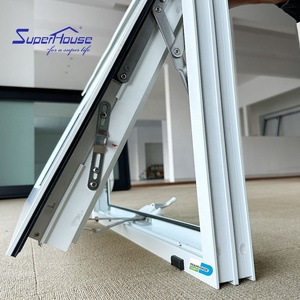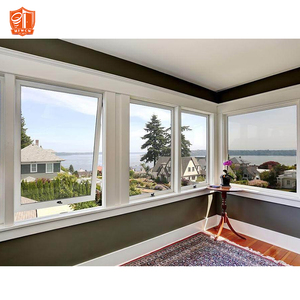(180157 products available)































































































































































































































Introduced in 2015, Windows 10 took over from Windows 7 and 8, capturing nearly 80% market volume by 2021. It unveiled a new multifaceted platform, thus dispensing major updates since its inception. Those updates fixed bugs and presented new game modes and a revamped interface.
In a nutshell, types of Windows 10 come in different editions, namely:
Windows 10 is characterized by a diverse array of features meticulously crafted to optimize functionality, productivity, and user contentment.
Windows 10 can be used across various industries owing to its versatility and functionality. Here are some;
Healthcare Industry
The Windows operating system can be used in the healthcare industry for various applications, such as electronic health record (EHR) systems, medical imaging software, telemedicine platforms, and healthcare analytics tools. Windows provides a stable and secure platform for healthcare applications, allowing healthcare professionals to access and manage patient information, perform diagnostic imaging, provide remote consultations, and analyze healthcare data. Windows also offers features such as touchscreens, tablets, and pen input, making it easier for healthcare professionals to use mobile devices and digital pens in clinical settings.
Education Sector
Windows 10 can be used in the education industry for various applications, such as learning management systems, classroom collaboration tools, educational software, and student information systems. With its user-friendly interface and wide range of educational apps available through the Microsoft Store, Windows 10 provides a flexible and engaging learning environment for students and educators. Windows 10 also offers features such as digital ink, touchscreens, and voice input, making it easier for students to use devices with writing capabilities and interact with content using voice commands.
Manufacturing Sector
Windows 10 can be used in the manufacturing industry for various applications, such as inventory management software, production scheduling tools, quality control systems, and machine monitoring applications. With its stable performance and compatibility with a wide range of peripherals and devices, Windows 10 provides a reliable platform for manufacturing operations. Windows 10 also offers features such as device management through Microsoft Intune, which allows manufacturers to manage and secure Windows devices used in production environments. Additionally, Windows 10 supports connectivity options like Bluetooth and Wi-Fi, enabling seamless communication between devices and IoT integration for smart manufacturing initiatives.
Retail Industry
Windows 10 can be used in the retail industry for various applications, such as point of sale (POS) systems, inventory management software, customer relationship management (CRM) tools, and employee training programs. With its user-friendly interface and support for touchscreen devices, Windows 10 provides a seamless and efficient experience for retail workers and customers at POS terminals and mobile devices. Windows 10 also offers features such as Windows Hello for biometric authentication, ensuring secure access to retail applications and data. Additionally, Windows 10's compatibility with a wide range of hardware allows retailers to choose from various devices, including tablets, handheld scanners, and integrated POS systems.
System Requirements:
The first important factor is the system requirements of the Windows version. Because Windows 10 has lower system requirements than higher versions, it can be installed on PCs with at least 1GHz CPU and 1GB RAM for 32-bit systems and 2GB RAM for 64-bit systems. In contrast, higher versions like Windows 11 have higher requirements, such as a 1Ghz clock speed CPU and a minimum of 4GB RAM and 64GB of storage space. Therefore, check if the PC meets the minimum hardware requirements of the Windows version before installation.
Bit Version:
The Windows version to buy also depends on what bit version the user prefers to use. The two different versions are 32-bit and 64-bit. 64-bit allows the use of more RAM than 32-bit, so it is better if the PC has 4GB RAM or more. However, 32-bit works fine on computers with less than 4GB RAM. A lot of modern computers come with a 64-bit operating system by default, but users should check theirs first. Users should choose the bit version that matches their computer's bit architecture and RAM capacity.
License Type:
Users should consider the type of Windows license they want to buy. The licenses are OEM, Retail, and Volume. Retail licenses cost more, but they allow the same copy of Windows to be installed on another PC if the current one is replaced. OEM licenses are cheaper, but they can only be moved if installed on a new hard drive and stay with the first PC permanently. Volume licenses are for businesses and let multiple PCs use Windows with one key at a reduced cost. Retail offers the most flexibility, while OEM is best for users who don't plan to change their PC hardware.
Edition:
The Windows edition is also an important factor to consider. The editions include Windows 10 Home, Pro, Enterprise, and Education. Home is a basic edition suitable for everyday tasks like web browsing or streaming, while Pro has additional business features such as remote desktop access, BitLocker encryption, and increased security options. Enterprise and Education are similar to Pro but designed for large organizations and schools. Most users will find that Home or Pro meets their needs, but enterprises or institutions should get Enterprise or Education for their specific requirements.
Q1: Can I update my Windows 10 Pro to Windows 11?
A1: Yes. Any PC running a genuine Windows 10 Pro that's eligible for the upgrade will be offered the Windows 11 upgrade through Windows Update at no charge.
Q2: What is the distinction between Windows 10 Home and Pro?
A2: The main difference is that Windows 10 Pro has features designed to meet the needs of advanced users and businesses, such as BitLocker Data Encryption and Protection, Azure Edition, Mobile Device Management, and other related tools for a remote workforce and enterprise users.
Q3: How much RAM can Windows 10 Pro handle?
A3: Windows 10 Pro can support up to 2 TB of RAM.
Q4: What should users do to prepare for a Windows 10 installation?
A4: Users must back up files, disable security software, ensure one has Windows 10 installation media, ensure one's PC is compatible, and check for updates before installation, among others.